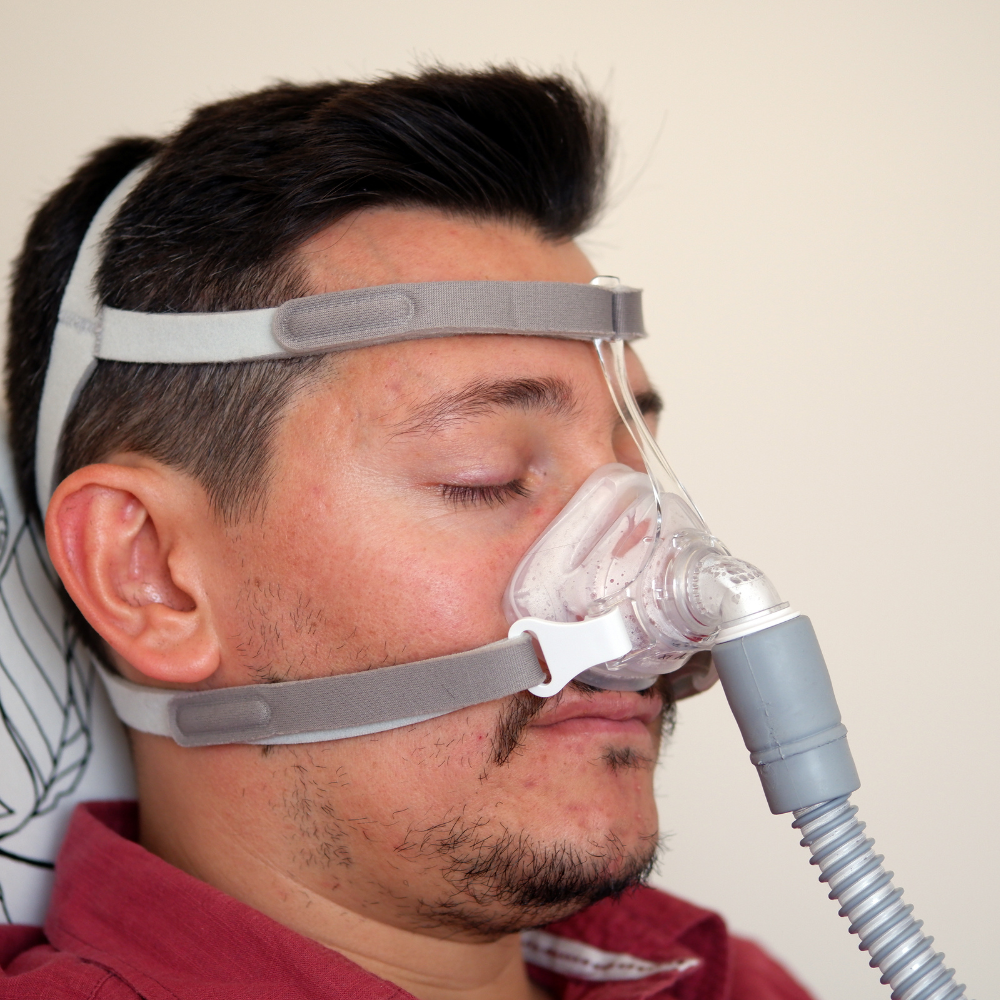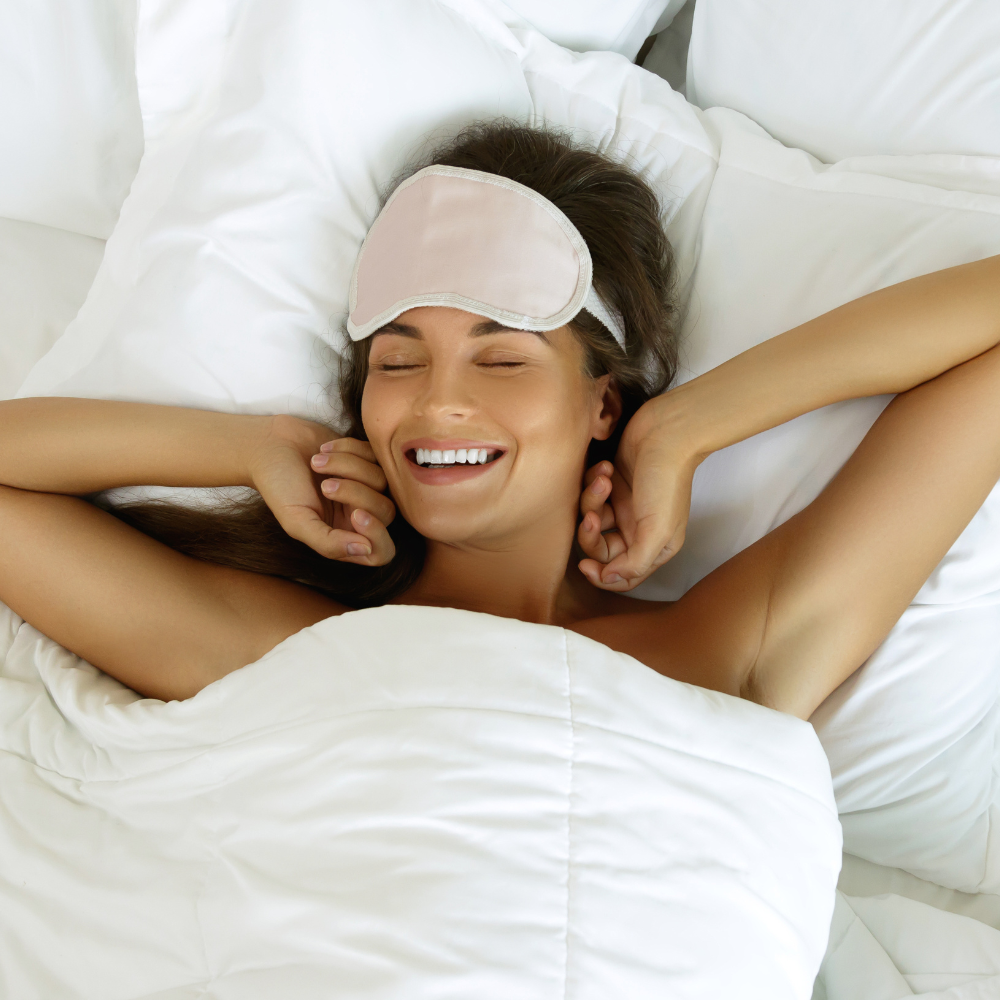Silent Struggles: Unraveling the Enigma of Obstructive Sleep Apnea and Unveiling Innovative Solutions for Better Sleep

- Author: Craig Fox
Obstructive Sleep Apnea (OSA) stands as the most prevalent sleep-related disorder. Individuals suffering from OSA experience partial or complete obstruction during sleep, which causes an interruption in the regular airflow into the lungs. This obstruction can result in a range of symptoms and potential health complications.
An individual with OSA encounters a partial or complete blockage of their upper airway, impeding the normal flow of air into their lungs. The diaphragm and chest muscles exert extra effort due to this blockage to be able to overcome the obstruction and maintain proper breathing. This increased effort can cause shallow breaths or temporary pauses in breathing, known as apneas. These apneas may manifest as sudden and noticeable disruptions in breathing, often accompanied by loud gasps, snorts, or body jerks, as the body instinctively strives to resume normal breathing patterns.
While treatments like continuous positive airway pressure (CPAP) therapy and dental devices are important, practicing good sleep hygiene is equally essential. By integrating the following strategies into their daily routine, individuals can enhance sleep quality and overall well-being.
Lifestyle Modifications
Through the implementation of a combined approach involving regular exercise and a balanced diet, individuals can effectively support their weight management goals with the invaluable guidance provided by healthcare professionals or dietitians.
Let’s explore this topic further by expanding on the key points:
Importance of weight management in OSA
When individuals carry extra weight, particularly around the neck and upper airway, it can contribute to the narrowing and collapse of the airway during sleep, resulting in OSA. By either maintaining a healthy weight or shedding excess pounds, the severity of OSA can be significantly reduced or even eliminated.
Regular exercise and its role
Regular physical activity and exercise play critical roles in weight management and the improvement of OSA symptoms. Exercise aids in calorie burning, boosts metabolism, and facilitates fat loss. It also assists in building muscle mass, which further contributes to weight management by raising the overall metabolic rate. Engage in simple exercises such as brisk walking, or running, both of which contribute positively to the management of obstructive sleep apnea (OSA).
Benefits of a balanced diet
Include in your diet a range of fruits, vegetables, whole grains, lean proteins, and healthy fats, while minimizing the consumption of processed foods, added sugars, and unhealthy fats. Healthcare professionals can offer personalized guidance tailored to individual needs and dietary requirements. A well balanced diet not only aids in weight management but also guarantees the intake of vital nutrients and vitamins essential for optimal health.
Role of healthcare professionals and dietitians
Guidance from healthcare professionals, including primary care physicians, sleep specialists, or registered dietitians, alleviate OSA symptoms. These professionals can assess an individual’s medical history, conduct physical examinations, and provide personalized advice and support based on their expertise. They may recommend specific dietary modifications, portion control strategies, or meal planning to facilitate weight management.
Sleeping Position & Routine
When sleeping on your back, the tongue and soft tissues in the throat can collapse backward, leading to airway obstruction. This obstruction often results in snoring and episodes of apnea during sleep. On the contrary, sleeping on your side helps keep the airway open, reducing the likelihood of blockage. This position facilitates smoother airflow and decreases the severity of OSA symptoms.
Specialized pillows
Using specialized pillows designed to promote side sleeping can be particularly helpful in maintaining a proper sleeping position. These pillows are typically contoured or have built-in supports that encourage comfortable side sleeping. Their unique shape provides adequate support to the head, neck, and shoulders, helping align the airway and reducing the risk of obstruction during sleep. Individuals with OSA or those prone to snoring can benefit greatly from these pillows.
Positional therapy devices
In addition to specialized pillows, various positional therapy devices are available to assist individuals in maintaining a side sleeping position throughout the night. Examples of such devices include wedge pillows, body pillows, and wearable devices like positional belts or backpacks. These aids offer additional support and help individuals train themselves to sleep on their sides, reducing the occurrence of airway obstruction and improving sleep quality.
Regular sleep schedule
Following a regular sleep schedule is crucial for promoting better sleep quality and managing sleep disorders like OSA. Maintaining consistent bedtimes and wake-up times helps regulate the body’s internal clock, known as the circadian rhythm. A regular sleep schedule ensures that individuals get sufficient sleep each night and enhances the overall quality of their sleep. It is recommended to establish a routine that allows for an appropriate sleep duration and stick to it consistently, even on weekends or days off.
Avoiding Alcohol and Sedatives
Alcohol and sedatives have a relaxing effect on the muscles, including those in the throat. Consumption of these substances before bedtime can potentially contribute to airway collapse, which can affect individuals with obstructive sleep apnea (OSA).
Effects of alcohol and sedatives on throat muscles
Alcohol and sedatives function as central nervous system depressants, inducing muscle relaxation and sedation. They impact muscles throughout the body, including those that support the airway, which can lead to complications in sleep disorders like obstructive sleep apnea (OSA). Specifically, they can relax the muscles in the throat, increasing the likelihood of collapse during sleep.
Impact on sleep disorders, particularly OSA
OSA involves recurrent episodes of partial or complete airway collapse during sleep. Alcohol and sedatives exacerbate this condition by further relaxing the throat muscles, making the airway more prone to collapsing. As a consequence, these substances can contribute to a higher frequency of apnea episodes and interruptions in breathing during sleep. This can lead to disrupted sleep patterns and diminished overall sleep quality.

Self-Care Tips
Optimizing Sleep Environment: To ensure a restful and rejuvenating night’s sleep, it is crucial to create a sleep-friendly bedroom environment. Here are some ways you can ensure a restful and rejuvenating night’s sleep:
- Invest in a Comfortable Mattress: Choose a high-quality mattress that aligns with your preferences and provides ample support. Consider factors such as firmness level, material (memory foam, latex, etc.), and size to ensure optimal comfort and proper alignment for your body.
- Minimize Noise Disturbances: Create a tranquil sleep environment by reducing noise disruptions. Utilize earplugs or a white noise machine to block out sounds like traffic or noisy neighbors. Additionally, ensure that any electronic devices or household appliances in your bedroom, such as alarm clocks or fans, operate quietly.
- Embrace Darkness: Foster a dark sleeping atmosphere by using blackout curtains or blinds to shield your room from external light sources, such as streetlights or early morning sunlight.
- Keep a Cool Temperature: Maintain a comfortably cool bedroom temperature to promote better sleep. Although the ideal temperature varies among individuals, slightly cooler environments generally facilitate more restful sleep.
- Declutter and Organize: Cultivate a calming atmosphere by keeping your bedroom tidy and free of clutter. Remove unnecessary items from your sleeping area and ensure surfaces remain clear and organized. A clean and serene space promotes relaxation while reducing potential distractions.
Nasal Dilators and Sprays: If you are experiencing nasal congestion, there are several additional measures you can take to improve your sleep quality. Consider the following suggestions:
- Nasal Dilators: They work by gently expanding the nostrils, reducing nasal congestion, and improving airflow. Nasal dilators come in various forms, such as adhesive strips or external devices, and can be comfortably worn during sleep.
- Saline Nasal Sprays: Saline nasal sprays provide relief by moisturizing and flushing out the nasal passages. These sprays contain a saline solution that helps reduce congestion, alleviate dryness, and clear mucus.
- Steam Inhalation: Steam inhalation is a natural remedy that can alleviate nasal congestion. The warm, moist air helps to loosen mucus, relieve congestion, and promote better breathing, leading to improved sleep quality.
Sleep more comfortability with V-Com for CPAP
V-Com for CPAP: While research has demonstrated that continuous positive airway pressure (CPAP) therapy is the most effective treatment for sleep apnea, its adoption rate is less than 50%. The reason is simple, CPAP therapy can be very uncomfortable for a large portion of the population.
To address these challenges, a new innovation called V-Com has been developed. This technology was specifically engineered to soften the airflow while preserving the fundamental benefits and scientifically tested effectiveness of CPAP therapy. The goal of V-Com is to provide individuals with a night of uninterrupted and comfortable sleep, free from disturbances.
Regular Follow-ups: It is good to have an open and regular communication with your healthcare provider and schedule and attend follow-up appointments. These appointments enable them to monitor your progress, and make any necessary adjustments to optimize your therapy.
Conclusion
Take the necessary steps in managing your obstructive sleep apnea for an improved sleep quality and overall health. Treatments like CPAP therapy, oral appliances, lifestyle changes, and surgery can alleviate symptoms and combining these treatments with self-care practices improves condition management of your OSA.
Ready to get started?
Optimize and improve your sleep apnea treatment with V-ComTM, no prescription required!
30 Day Money-Back Guarantee
